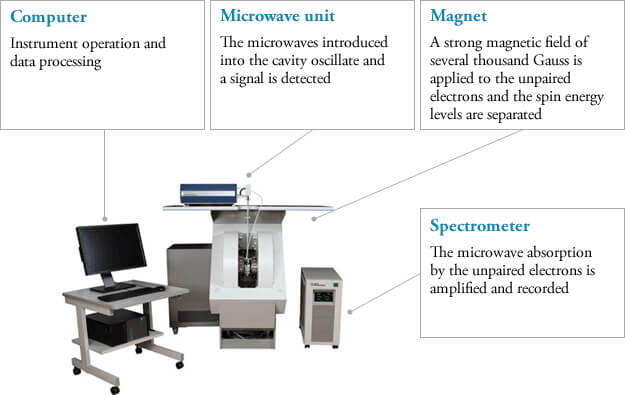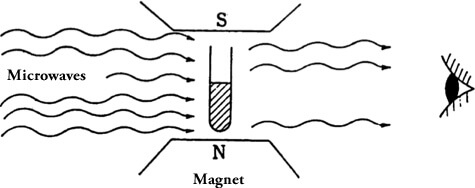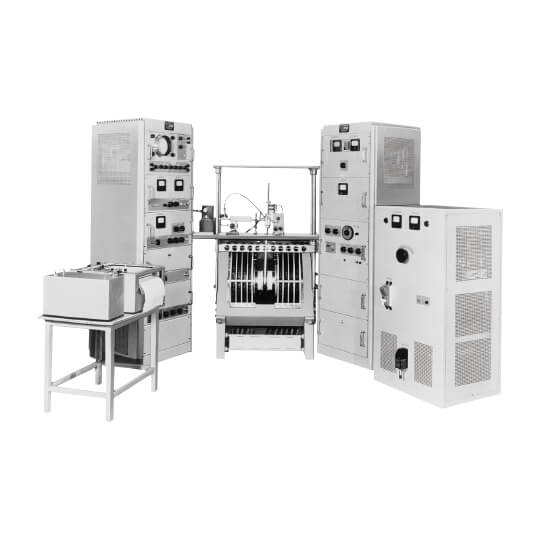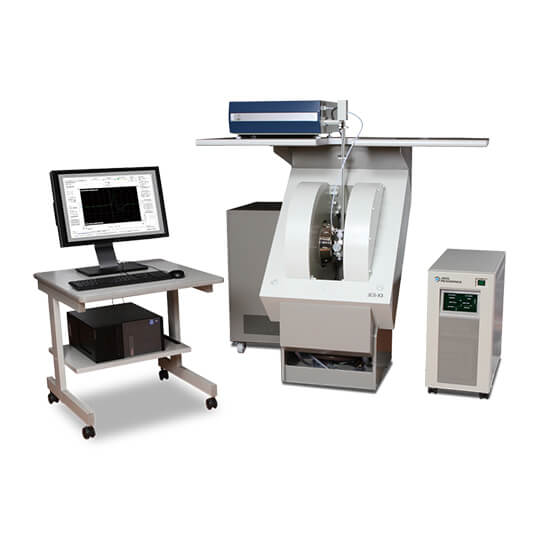Electron Spin Resonance Spectrometer (ESR)
ESR basic knowledge
ESR is an acronym for Electron Spin Resonance. (Also known as EPR, Electron Paramagnetic Resonance)
ESR is a method for observing the behavior (dynamics) of the electrons within a suitable molecule, and for analyzing various phenomena by identifying the electron environment.
ESR measurements afford information about the existence of unpaired electrons, as well as quantities, type, nature, environment and behavior.
ESR instruments provide the only means of selectively measuring free radicals non-destructively and in any sample phase (gas, liquid or solid).
ESR is actively being applied in pharmaceutical and agricultural basic research, and is widely used for various applications such as production lines for semiconductors and coatings, as well as in clinical and medical fields, such as cancer diagnosis.
ESR instrument composition

Simplified Principle of Electron Spin Resonance (ESR)
With an ESR instrument, a static magnetic field and microwaves are used to observe the behavior of the unpaired electrons in the material being studied. The study of the behavior of the electrons in a sample gives information about the condition of the sample.

ESR is used to observe and measure the absorption of microwave energy by unpaired electrons in a magnetic field.
What we can learn from ESR
ESR measurements afford information about the existence of unpaired electrons, as well as quantities, type, nature, surrounding environment, and behavior.
- The ‘g’ value, which reflects the orbit level occupied by the electron
- Line width, which is related to the transverse relaxation time
- Saturation characteristics, which are related to the longitudinal relaxation time
- Number of unpaired electrons
- Hyperfine structure : hfs, which represents the interactions between electrons and nuclei
- Fine structure: fs, which represents the interactions between electron and electron
- Exchange interactions reflecting the exchanges between electrons
Applications of ESR
- Electron state, such as magnetic materials and semiconductors
- Electron state of semiconductor lattice defects and impurities (dopants)
- Structure of glass and amorphous materials
- Tracking of catalytic reactions, changes in charge state
- Photo-catalytic reactivity and photochemical reaction mechanisms
- Radicals of polymer polymerization processes (photo-polymerization, graft polymerization)
- Polymer resolution (photolysis, radiolysis, pyrolysis, chemical decomposition)
- Active oxygen radicals related to aging in disease in living organisms
- Oxidative degradation of lipids (food oils, petroleum, etc.)
- Detection of foodstuffs exposed to radiation
- Measurement of the age of fossils and geological features using lattice defects


